
Slap Happy: How to Play World-Beat Rhythms with Just Your Body and a Buddy
Copyright 2002 by Alan Dworsky and Betsy Sansby
All rights reserved. No part of this book may be used or reproduced by any means without permission except the blank charts on pages 6567.
Published by
D ANCING H ANDS M USIC
4275 Churchill Circle
Minnetonka, MN 55345
phone or fax: 952-933-0781
dancinghands.com
Cover art by Toni Pawlowsky
Illustrations by Toni Pawlowsky (pages 1, 16, 19, 26 and 33), Jay Kendell (pages 24, 28, 40, 43, 48 and 56), and Robert Jackson (pages 13, 30, 31, 54 and 55)
Book design and layout by Mighty Media
Printed in the United States of America with soy ink on recycled, acid-free paper by Banta ISG (Viking Press)
Slapping patterns on the CD performed by Betsy Sansby and Alan Dworsky
Drum tracks on the CD performed by Marc Anderson and Alan Dworsky
ISBN 0-9638801-7-9
T HIS BOOK IS DEDICATED TO M ARK M ODAFFERI,
every kids dream of a music teacher,
and to his lucky students at
Cato-Meridian Central School in Cato, New York.
What is Slap Happy?
S LAP H APPY is a fun way to turn drum rhythms into body rhythms you can step, clap, and slap with a buddy. Right from the start, youll be learning how to slap traditional rhythms from West Africa and the Caribbean: Kuku from Guinea, Sunguru Bani from Mali, Kpegisu from Ghana, Bomba from Puerto Rico, and Conga from Cuba.
You can do Slap Happy in pairs or in groups, indoors or out, at home or at school. If youre a parent, its a great way to do something fun and educational with your kids that doesnt require any previous musical training.
If youre a music teacher, you can use Slap Happy to give your students a hands-on experience of world rhythms without having to buy any instruments. And while the kids are learning the rhythms, theyll be building co-ordination, concentration, and cooperation.
Heres how it works. The book is organized into lessons that are arranged in order of difficulty. Each lesson includes several patterns related to a single rhythm. The patterns start simple and gradually get more complex. But youll hardly notice, because we make sure you get the right-size steps, in the right order, at just the right time.
The first step with each new pattern is to learn to slap it solo. The next step is to learn to slap it with a buddy. The final step is to combine patterns to create the Slap Happy version of an African or Afro-Caribbean drum ensemble.
The charts we use are easy to understand even if youve never read music before. And we dont just dump a pile of charts on you and leave. Well be with you every step of the way, anticipating your questions, pointing out whatever is most important, and explaining whatever we think will make your journey easier.
The CD that comes with the book has a recording of every rhythm youll be learning, so you can hear how each pattern is supposed to sound. You can also slap along with the special extended recordings of each rhythm played on congas, djembes, and other traditional drums. For easy reference, youll find the numbers of all the slap-along drum tracks on the face of the CD itself.
Slap Happy was designed to embody the spirit of world rhythms and make people laugh. We hope it does both for you.
The charts and the moves
We use box charts for Slap Happy because theyre simple, clear, and easy to read. We could have used standard music notation, the kind youre familiar with if you play an instrument or sing in a chorus. But standard music notation gives you lots of information you dont need for Slap Happy, like the pitch of a note and how long to hold it. All you need to know to start slapping is what move to make and when to make it.
Thats what our three-row box charts tell you. Lets take a look at one:

Above the chart youll see the name of the pattern and the word solo or buddy in parentheses. Youll also see track numbers that tell you where you can hear the pattern on the CD.
If theres only one track number, that means youll hear the pattern slapped on that track. If there are two track numbers as on the chart above youll hear the pattern slapped on the first track and drummed on the second. The slap tracks are just long enough to give you an idea of how a pattern is supposed to sound. The drum tracks are a full two minutes long, to give you plenty of time to slap along.
The top row of the chart the count row tells you how to count a rhythm. Time moves from left to right, with each box being a single beat. The symbol + stands for AND , so to count this rhythm youd say 1 AND 2 AND 3 AND 4 AND . Each chart is two measures long, so the count repeats twice on the count row at the top of each chart.
All the rhythms youll be learning are dance rhythms that are meant to be repeated over and over. So think of every chart as ifit were written in a circle. When you get to the end, go right back to the beginning and start over without missing a beat.
Think of every chart as if it were written in a circle. When you get to the end, go right back to the beginning and start over without missing a beat.
The shaded boxes on the count row tell you where the pulse is in a rhythm. The pulse is the steady rhythm people feel in their bodies when music is playing. When you tap your feet to a song, youre tapping the pulse. When you dance, your feet move to the pulse. In the chart above, you can see that the pulse falls on beats 1 and 3.
Since the pulse is so fundamental to rhythm, were going to have you step it with every pattern in this book (except for the last lesson, when youll be stepping a more complex pattern). Each step is indicated by a foot in a box on the bottom row of each chart the foot row. As you can see, in the chart above you step the pulse on beats 1 and 3 the same beats that are shaded on the count row. It doesnt matter which foot you start with as long as you alternate feet. And you wont be moving around; youll just be stepping in place.
That just leaves the middle row the hand row. It tells you what to do with your hands and when to do it. Each letter stands for a move. For example, stands for double thigh. So in this rhythm, on beats 1 and 3 in the first measure youll slap both your thighs with both hands.
Heres a list of all the Slap Happy moves and the letters or symbols we use for them. Dont worry about memorizing them right now. Well explain each one as we go along:
= double thigh
T = thigh
H = heart
C = clap
S = slap
X = snap
P = patty
F = flip
* = splash
 = step
= step
Thats all you need to know for now. So lets get cracking and start slapping!
Lesson
Kuku
The first rhythm youre going to learn comes from the West African country of Guinea. Its called Kuku (koo- KOO ) and its a dance rhythm of celebration.
Kuku like most African rhythms is like an intricate puzzle, with interlocking parts that all fit together. In this lesson, youll learn how to slap two of the parts that are traditionally played on djembes. A djembe (jem-bay) is a goblet-shaped drum carved from a single piece of wood with a drumhead made from goat skin. You can hear the two parts youre going to learn played on djembes on Track 1 on the CD.
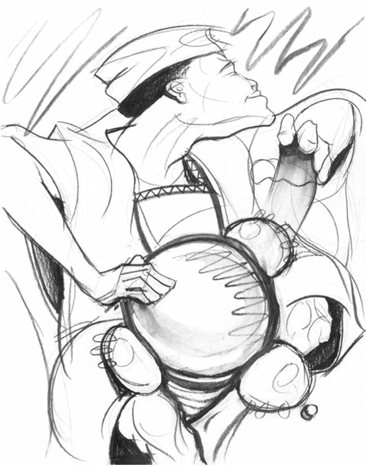
Next page
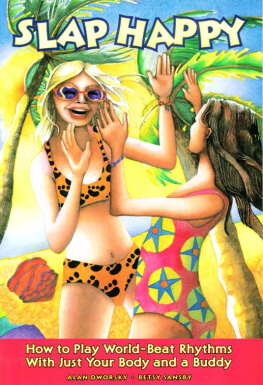
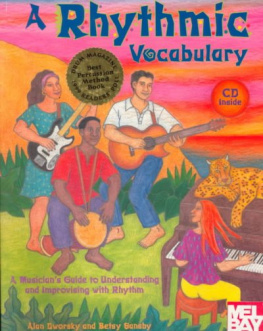
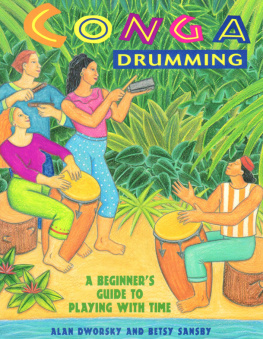
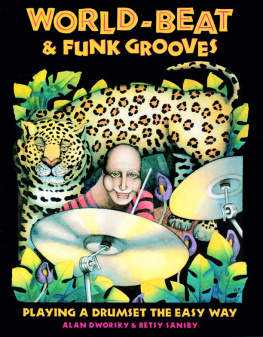


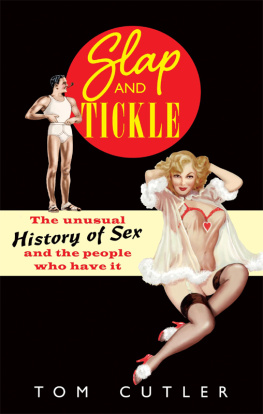
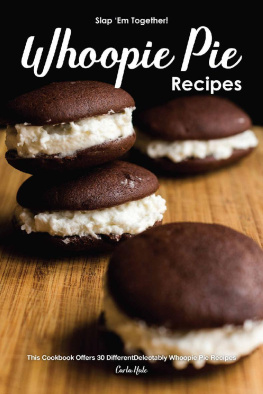
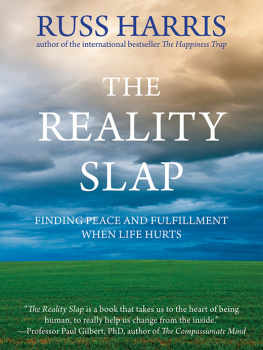
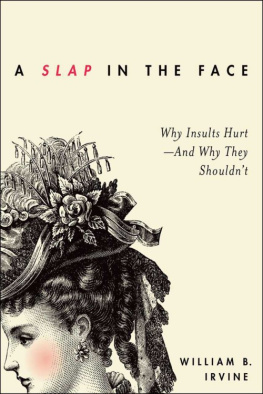
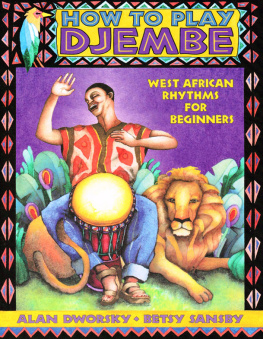


 = step
= step